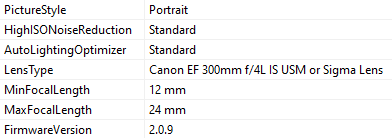I am the same. Been a very satisfied Canon user for over 30 years, and pro photographer for over 20 years. I only buy and use, and rely on Canon gear for my work. Yet I also agree that this is a major blunder. But then.... I'm not particularly thrilled with the R system, and its lenses. I bought an R5, but still use the 5D mk4 for work as I find it better in many ways for the work I do. I use the R5 for my personal hobby stuff, like nature and birds. I don't like any of the RF lenses for birds - either way too expensive and heavy, or too slow, or a zoom when I prefer a prime. Nikon make a relatively inexpensive fast 500mm, Sony make a great long zoom - and so do Tamron - and I'd buy one if it was available in RF mount. If Canon won't let them make one, I will not be happy. No, I wont jump ship to Nikon tomorrow, but can't keep excluding that ever happening either. I satisfaction with Canon is waning.For me, Canon cameras and lenses are my work gear and literally every previous third-party lens I've owned presented some sort of issue at one point or another that rendered the lens useless for a period of time or it had some strange issue develop. My Sigma Art primes are still terrific lenses and because I only have my remaining "niche" primes of 24mm f/1.4 and 35mm f/1.4 that I don't use as often as my 50mm and 85mm, they're not going anywhere. But I certainly can't afford to have a lens in my bag that could be rendered useless overnight because of a firmware update - that has been the case with some Tamron and Sigma lenses I've owned.
With all that said, this is a truly unfortunate blunder from Canon. Third party lens options are one of the primary elements that helped the success of the EF mount. I know when I was an up-and-coming teenager I could only afford a few Canon lenses and filled in what I could with Sigma stuff. I would eventually only rely on Canon lenses in my work kit, but that took a long time to fully be able to afford. This is very bad news for the countless thousands of aspiring photographers that want to shoot Canon are will have to either adapt an out of production EF lens, or use one of the many JUNK cheap-o RF lens options on the market right now. And yes, I said JUNK because for the prices they're selling for, you could have a Tamron or Sigma f/2.8 zoom that crushes it and Canon knows that.
Upvote
0

